The botanical name of turmeric is Curcuma Longa. This is a Herbaceous perennial plant that belongs to the Zingiberaceae family. It is closely related to ginger. Turmeric is a pungent spice that has a bright yellow color.
You can eat leaves, rhizomes, and turmeric flowers. Most people don’t know that the leaves of turmeric plants can be used in different dishes. You can wrap the fish in the leaves of turmeric to roast or grill.
Traditionally we use banana leaves for this purpose but you can also use turmeric leaves. Underground tubers or rhizomes are used for making turmeric powder.
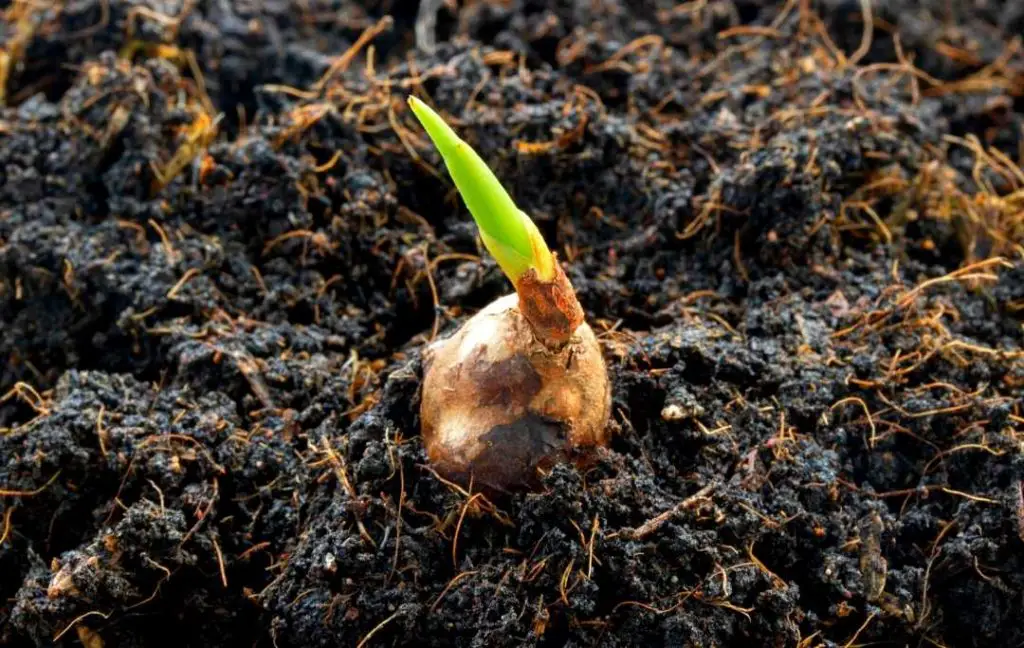
It is closely related to ginger. If you know how to grow ginger then you should not worry because the same tips and tricks apply to the turmeric which you use for growing ginger.
You can easily grow turmeric at home if you have a sunny spot. Warm and humid conditions are ideal for thriving turmeric plants. Make sure they grow in well-drained and neutral soil.
This plant has large green leaves and it can grow up to 3 feet tall. When the turmeric plants mature their stem sends up a spike of greenish-white or pink flowers.
WHEN TO PLANT TURMERIC?
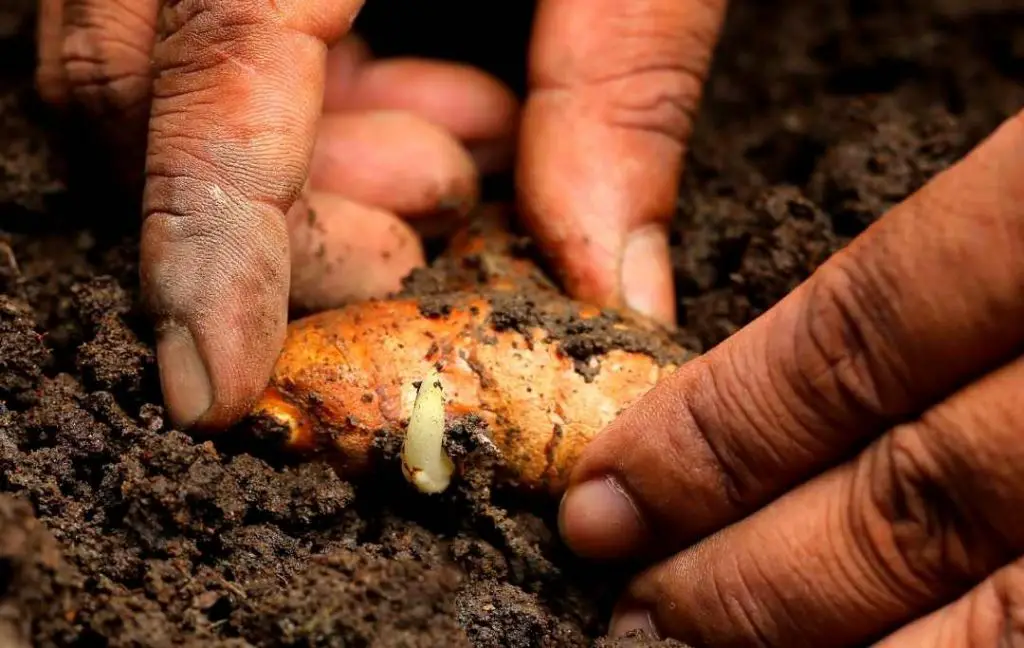
Time is very important when you plant turmeric or any other plant. The best time for planting turmeric is spring or summer as this plant loves to grow in warm weather when the temperature must be above 54 degrees Fahrenheit or 12 degrees centigrade.
If you are living in the tropics then you should not worry about it because you can plant it throughout the year.
DIFFERENT VARIETIES OF TURMERIC FOR GROWING
The varieties which you bought from the stores have a deep orange color. The most common variety which you seen in the grocery stores is Hawaiin Red.
The following are turmeric varieties that you can commonly grow at your home. Choose the best variety according to the climate in which you are living. You can also ask any nursery or local gardening center they will provide you with all the information about the variety which you can grow in your area.
1- WHITE MANGO
The scientific name of the white mango variety is Curcuma Mangga. This is the main variety which you can grow at your home. The color of flash is pure white and has a taste of green mango.
2- INDRA YELLOW
The scientific name of this variety is Curcuma Longa. The flash has a dark yellow color. The rhizomes will mature very fast and give you robust flavor in your dishes.
3- RED HAWAIIAN
It is a fast-growing variety that has a dark orange flash with intense flavouring.
4- BKK
This variety will produce smaller rhizomes with dark orange color. It has medicinal properties because of its high curcumin content.
HOW TO GROW STORE-BOUGHT TURMERIC EASILY?
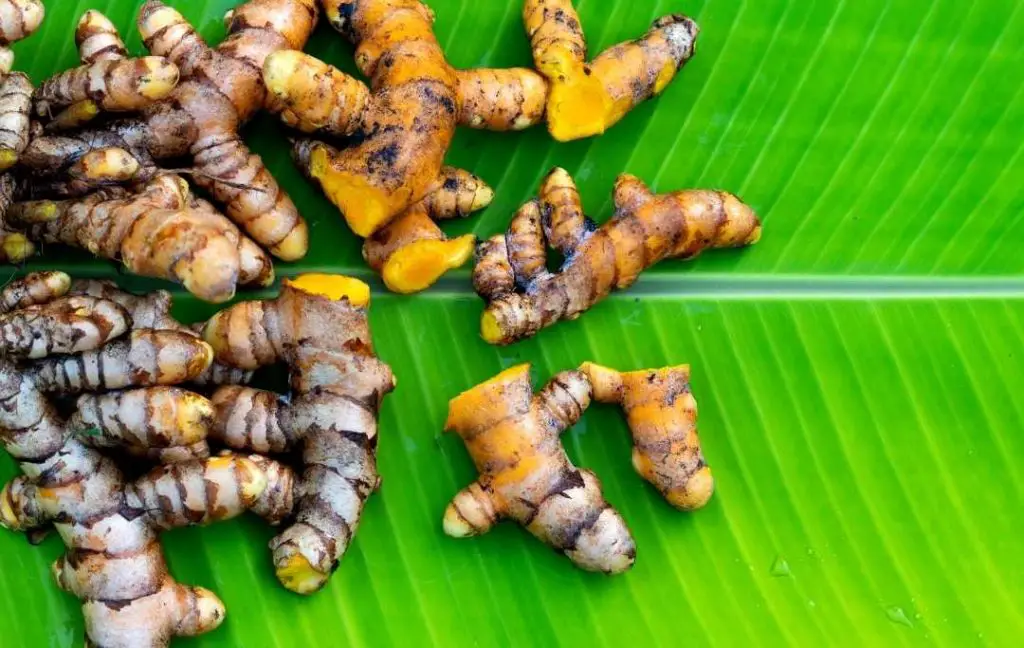
Turmeric is a superfood that has many benefits. Turmeric and Ginger both can be grown with mature rhizomes, not the actual seeds. Store-bought rhizomes can easily be used for the propagation of turmeric.
THINGS YOU NEED
- A pot with drainage holes.
- Paper towel
- High-quality potting mix
- Store-bought turmeric
PLATING
Here we are going to explain the simple and easy steps of growing turmeric. Hope this will help you and you will have all the necessary information in this article.
STEP1
The size of the pot should be 12 inches deep and 18 inches wide because this amazing herb can grow up to 1 meter. Plant 2 to 3 rhizomes in each pot.
The diameter of the pot should be wide enough to accommodate rhizomes easily. Take a pot and place the paper towel at the bottom. This will help to stop the soil from running out when you water it. You can also use coffee filters or stones for this purpose.
STEP 2
Fill the pot with a high-quality potting mix. You can also use garden soil but it is very compact that’s why airflow is not possible. For better results, it is suggested that you should use a potting mix.
Soil is a growing medium for your plants, it is responsible for providing all the basic nutrients to the plants. For healthy plants, rich soil is needed.
STEP 3
You can buy fresh turmeric rhizomes from any organic food store. They are also available at the local garden center or seed store. You should buy organic rhizomes because non-organic lysosomes are treated with substances designed to inhibit sprouting.
It is not easy to find fresh organic rhizomes for growing purposes. So you have to do a little hard work during finding a suitable variety of high-quality organic rhizomes.
Now take the rhizomes of turmeric and carefully watch them. Make sure that the rhizomes which you are going to bury in the soil, should have two or three buds.
The rhizome will sprout at growth points. You will see that there are growth points in the rhizomes so place them horizontally in the soil. Cover them with a thin layer of soil but do not bury them too deep.
STEP 4
Water the rhizomes thoroughly so they will adjust to the new environment easily. After one month you will see the rhizomes will sprout.
Read More:
- How To Grow Chillies From Seeds – 100+ Chillies Per Plant
- 10 Ways To Use Baking Soda In Your Garden
- Best Ways To Use Epsom Salt In The Garden
REQUIREMENTS FOR GROWING TURMERIC IN POTS
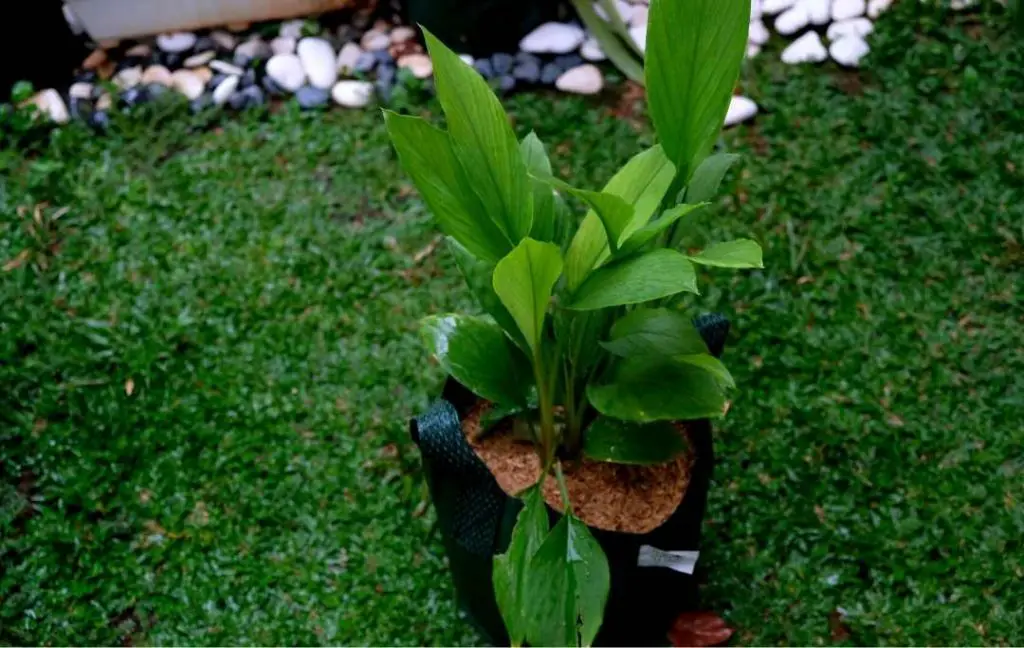
The following are the basic requirements for growing turmeric in pots.
PLANTING LOCATION
Full sun is needed for the healthy growth of turmeric. But it doesn’t mean that you should place them all day long in intense direct sunlight if you are living in warmer zones.
In a hot climate place the pot or container in partial sun. But if you are living in a temperate climate then you can keep the pot in full sun for optimum growth.
At the same time, turmeric plants need shelter from the wind. Harsh weather is not good for your plants so select that place where your plants are protected from heavy rain and storms.
SOIL
If you are growing your turmeric plants in the pot then you can use a high-quality potting mix. You can maintain the fertility of the soil if you are growing plants in the pot, raised bed, or container.
This is the most important benefit which is not possible when you grow plants in the ground. Well-drained soil is very important for the healthy growth of your plants otherwise your plant will suffer.
If you are growing your plants in the ground then add compost or fertilizer to the soil to make it rich. Organic nutrients are very essential for plants.
WATER
As it is mentioned above turmeric is related to ginger. It has some requirements which are essential for ginger. Water is an important factor in the growth of any plant.
During the growing season from spring to fall, keep the soil moist. If you are living in a dry climate then your plants need more water for increasing the humidity level around the plant.
Turmeric likes to grow in warm areas so you should increase the amount of water in summers because they need more water. Plants become exhausted during the daytime due to the strong heat of the sun.
If your plants remain thirsty then they will wither soon. As you are growing turmeric in pots so they need extra vigilance, as they will dry out more quickly than the ground. Regular water will maintain the moisture level in the soil.
TEMPERATURE
The suitable temperature for the growth of turmeric plants is between 68 to 95 Fahrenheit or 20 to 35 Centigrade. if the temperature drops below 50 degrees Fahrenheit or 10-degree centigrade then your plants will suffer.
The ideal temperature is a very important factor in the growth of any plant. If you provide the best ideal temperature to your plants then they will thrive well.
FERTILIZER
We don’t need fertilizer before the rhizomes sprouted. As we are growing turmeric plants in the pot and we are using a potting mix. Ao, there is no need for fertilizer at the start.
During the growing season, you can add slow-release fertilizer into the soil. The addition of rock dust and oyster shell flour will boost the micronutrients within the soil.
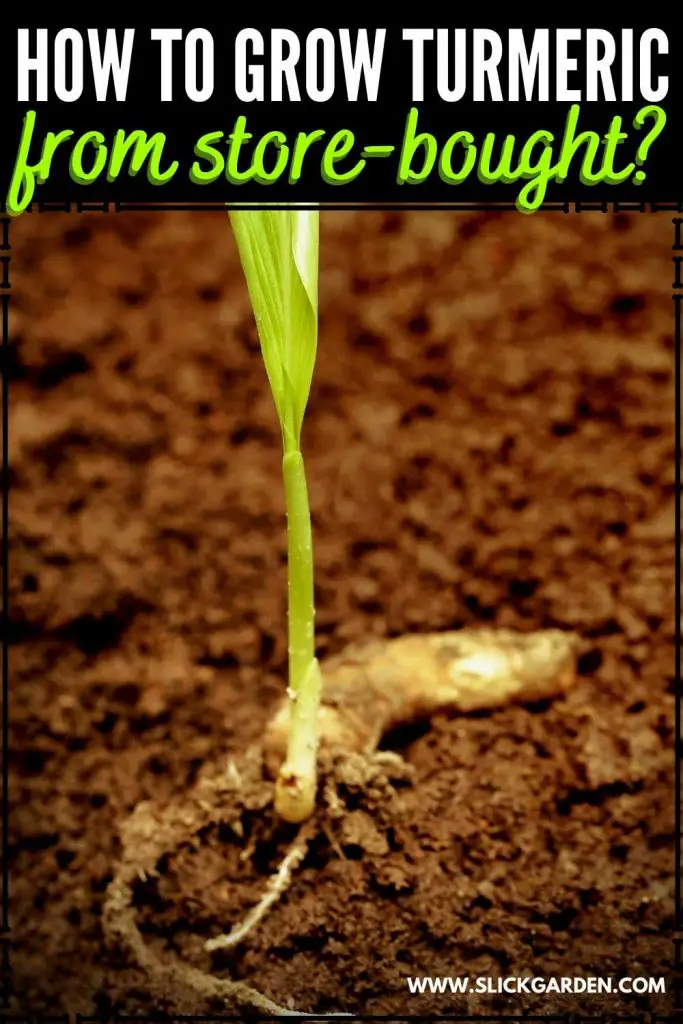
PESTS AND DISEASES
Pests and diseases are very harmful to your plants. If you want to inhibit the diseases and pests then use high-quality rhizomes. In this way, you will get such high-quality information that will give you brief information about the pest and disease of the turmeric plants.
PESTS
1- SHOOT BORER
The caterpillars bore in the rhizomes of turmeric and feed on them. You can control them by spraying pesticides.
2- LEAF ROLLER
Caterpillars start living in the leaf fold and take their food from them. This is the reason for destroying plants. Pesticides or insecticide is the best solution to getting rid of this problem.
3- SCALES
Scales are the main reason for damaging the rhizomes. They also affect the rhizomes during storage. Before storing the rhizomes, dip them in 0.05% Malathion or Dimethoate for 30 minutes.
DISEASES
1- LEAF BLOTCH
When you see small, oval, rectangular, or irregular brown spots on the leaves it means your turmeric plant is affected by the disease leaf blotch. These spots soon turn into dirty brown and become the reason for low production.
2- LEAF SPOT
When you see brown spots but are of different sizes starting appearing on the surface of young leaves this is the clear symptom of leaf spot. You will see white or grey color in the middle of spots. After some time you will see the leaves will start drying up and rhizomes do not develop well.
3- RHIZOME ROT
The clear symptom of this disease is that the leaves will start drying up from the margins. As a result, you will see the rhizomes start decaying.
HARVESTING
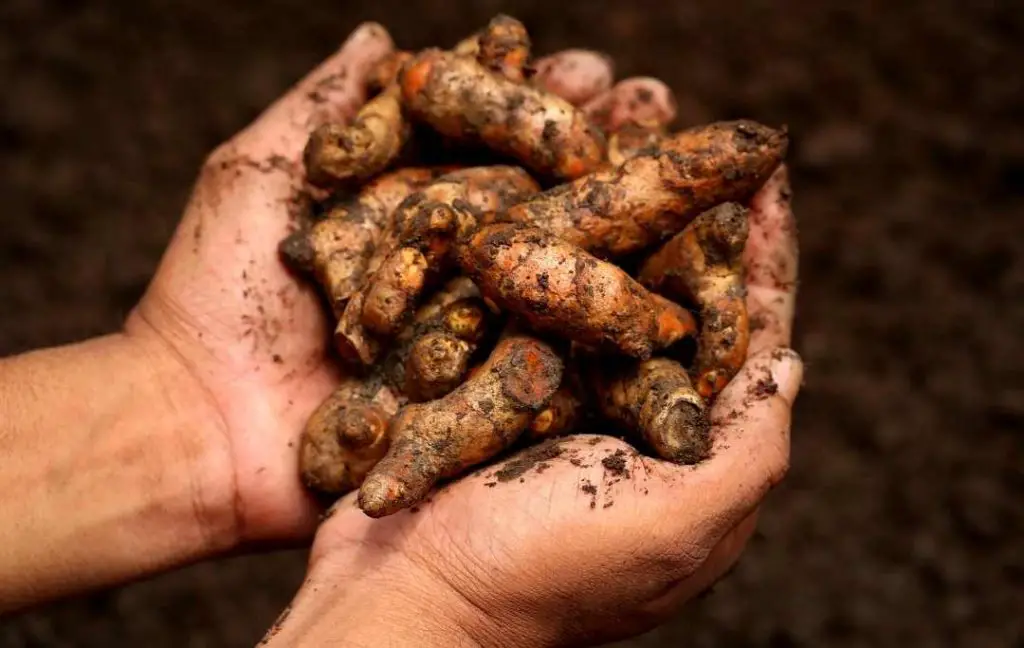
- After planting, you can harvest turmeric approximately after 8 to 10 months. When you see the foliage starts to wilt and turn to brown then it is the best time to harvest.
- Water the soil so it will make the soil soft and harvesting becomes easier.
- When you see the right time come to harvest turmeric then you should cut off the plant, with the help of the sharp shears.
- You can also store turmeric in your refrigerator. First, clean and dry turmeric and then wrap the rhizomes in an ad ammonium foil. This will help to keep them away from light and make them fresh for six months. Whenever you need turmeric, take out rhizomes from the freezer and grate them with a micro planar.
HOW TO TURN RHIZOMES INTO POWDER FORM?
A golden spice that has a warm bitter taste with a mustard aroma. Your homegrown turmeric gives a fresh taste and flavor to your dishes. Fresh turmeric has a strong flavor but it will turn your fingers yellow when you cut and slice them. It is suggested that you should wear food safety gloves and use a non-stainable surface. In this way, you can avoid dying your skin.
You will not face any difficulty during making your turmeric powder. For grinding rhizomes into powder, first, boil the roots. After boiling, leave them in the sun for drying.
When they are dehydrated then it is time to convert into powdery form. You can use a food processor or grinder to make the powder of the rhizomes. Keep the powder in airtight jars for long-lasting use.
Keep in mind fresh turmeric doesn’t have a long life, that’s why you should keep it in your refrigerator. The freezing process will temper the flavor for some time.
Read More:
